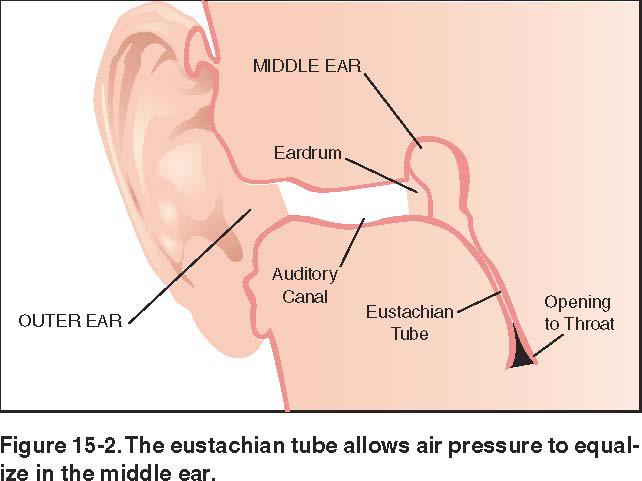Acute otitis media (AOM), commonly known as an ear infection, is the most common bacterial infection of pediatric patients. It is estimated that nearly 85% of children have at least one episode of AOM before their first birthday. However, most children “outgrow” these infections by age three or four.
To understand why most children stop having AOM, one needs to know about the Eustachian tube. The Eustachian tube is a narrow channel that connects the middle ear space to the back of the nose, just behind the soft palate. It functions to maintain an appropriate amount of pressure within the middle air space. In young children, the tube is prone to dysfunction because of two main reasons.
First, the Eustachian tube is very small and narrow, especially in younger children, and is very prone to becoming blocked. The most common reason for the blockage is adjacent tissue swelling from allergies or viral respiratory infections. This causes negative pressure within the middle ear space, and allows fluid to develop. This fluid is a good median for bacteria to invade and grow, causing AOM.
Secondly, the Eustachian tube sits in a horizontal plane in small children. As the child grows, the tube changes to sit in a more vertical position, which prevents bacteria from the nose and throat from reaching the middle ear space. Therefore, by being in a more horizontal plane, the younger child is more prone to AOM.
While infections are the mainstay of Eustachian tube dysfunction, there are some patients that develop middle ear fluid but do not develop infection. This is known as otitis media with effusion. If this recurs or persists for over 3 months, then this is called chronic serous otitis media (CSOM).
Symptoms of AOM are classic for an “earache”: fever, irritability, pulling on the ear, decreased appetite, and purulent drainage (possible if the ear drum ruptures). These episodes often coincide with an upper respiratory infection. Symptoms of CSOM are often difficult to notice if they are not accompanied by infections. However, these patient typically have a mild to moderate hearing loss, which can be manifested by speech and language delay. Both conditions, AOM and CSOM, can easily be diagnosed by a physician evaluating the patient with an otoscope.
Other important testing that should be performed during an evaluation for recurrent AOM or CSOM is a hearing test. The most commonly-used tests include a tympanogram, audiogram, or otoacoustic emission testing.
Treatment options for an episode of AOM include oral antibiotics, as well as ototopical antibiotic (ear drops) if there is concern of ear drum rupture. If the problem becomes recurrent or chronic, then surgical treatment is necessary.
The mainstay of therapy for recurrent AOM and CSOM is myringotomy and ear tube placement. Indications include 3 episodes of AOM in 6 months or 4 episodes in 12 months, or CSOM with hearing loss based on testing. The ear tube is placed using general mask anesthesia (no breathing tube or IV medicines are used) in an operating room. The procedure is done in approximately 10 minutes on an outpatient basis. Tubes are effective in 98% of children at reducing AOM and CSOM. In general, ear tubes typically fall out on their own between 6 and 12 months.
There are very few complications of ear tube placement. The most common is purulent drainage from the tube by infection. This is treated with antibiotic ear drops, and sometimes oral antibiotics. This complication is reduced by keeping the ears dry as possible while the tubes are present. Many children wear ear plugs, which can be purchased at a pharmacy, during bathing and swimming. Very rarely, this becomes a recurrent problem and the tube needs removed as bacteria have become adherent to the ear tube.
Another possible complication, which occurs in 1 to 2 percent, is a residual hole in the ear drum that may need repaired surgically. This is why it is important to have follow-up evaluations by the otolaryngologist.
Once the tube falls out, will my child need another set or ear tubes placed? In general, approximately 20 percent of children will need another set of ear tubes placed due to recurrent AOM or the redevelopment of CSOM.
Although earaches (AOM) are very common in young children, most resolve with antibiotics. However, if it does become a recurrent or chronic problem, then ear tube placement is a very successful treatment option. Any questions or concerns can be further discussed with your local ENT physician.
Robert Wilson, MD.

